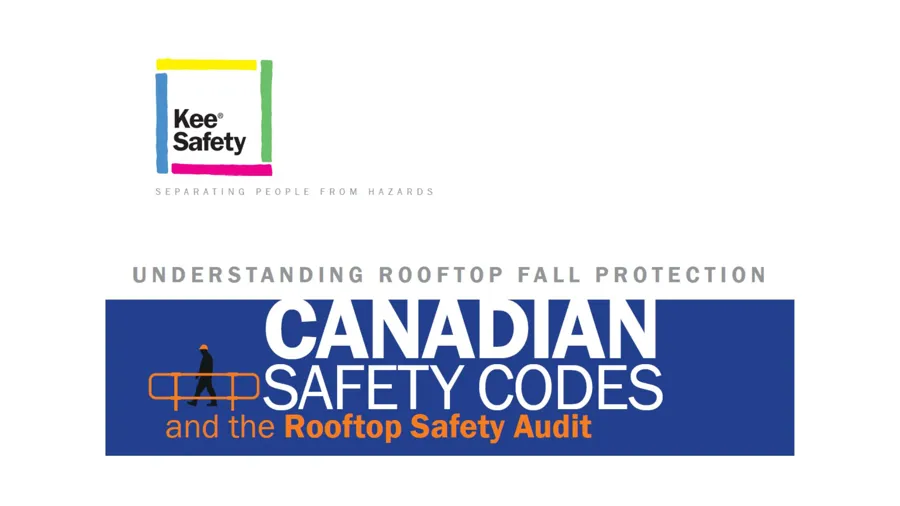
You are visiting the Canada Kee Safety website from United States. Would you like to go to the United States site?
Slapstick comedy was a staple of entertainment for centuries before Mack Sennett, Charlie Chaplin, and the Three Stooges made their marks. It lives on today through the likes of Jim Carrey and Jackie Chan. Although pratfalls can draw some of the loudest laughs on stage or screen, any fall in a workplace setting is a great cause for concern.
The Association of Workers’ Compensation Boards of Canada (AWCBC) reported 12,255 lost time claims due to falls to a lower level in 2020, including 49 deaths. The economic impact on employers and the physical and personal trauma of injured workers makes fall protection a priority in the workplace.

Summarizing national, provincial, and territorial standards and regulations for working at heights, the Canadian Centre for Occupational Health & Safety (CCOHS) notes that an employer must provide a fall-protection system if work is to be performed at a height of three (3) metres or more, or if the surface onto which the person might fall would present a greater risk of injury than a solid, flat surface.
The agency recommends a series of fall protection measures, including fixed barriers, travel restraint systems, and fall arrest systems. Many areas inside a facility require fall protection systems or equipment (e.g., mezzanines, docks, open pits, machinery); however, outside the building—the rooftop—is considered the most dangerous area.
When considering what type of rooftop fall protection is needed, regulatory agencies point to the frequency, duration, and location of the work being done.
a) If less than 2 metres, fall protection equipment is necessary.
b) Between 2 and 5 metres, fall protection or a designated area is necessary.
c) Greater than 5 meters, fall protection, or a designated area is desirable but not necessarily required.

If a worker comes within 5 metres of the edge of a flat or low-slope roof, a collective roof guardrail system provides the best fall protection. Perimeter guardrails built to standards protect all workers “collectively.” They require no special training or equipment for workers to be protected.
When a rooftop safety railing is not practical, such as on high-sloped roofs or in confined spaces, Personal Fall Arrest Systems (PFAS) are required within the danger zone. Harnesses with lanyards and horizontal lifelines are prime examples. These require a temporary or permanent roof anchor.
Designated areas without safety railings or where PFAS are not deemed necessary can be marked by warning lines. They should have stable bases, strong cables, and high-visibility safety flags.
Skylights and dome lights are considered holes in the roof and require fall protection. Skylight screens or railings are designed to meet regulations.
The roof edge and openings are not the only areas of concern. A typical commercial or industrial rooftop is replete with hazards such as ductwork, piping, and cables that workers need to cross over. Roof platforms with steps, a work platform, and railings proved a means for workers to traverse these obstacles.
Fall prevention may be the last thing a slapstick comedy director wants on the set. For employers and employees alike, workplace falls are no laughing matter. In the face of potential corporate and individual fines and imprisonment—and especially the trauma of personal injury and business loss—fall protection should be among a company’s highest priorities.

What experts look for when performing a rooftop safety audit and how to improve worker safety with solutions that exceed OH&S compliance.